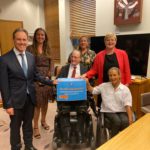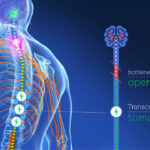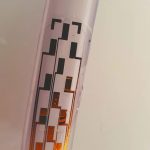A new international team of 32 scientists has joined forces to identify areas of promising research in spinal cord injuries. Their first project aims to mend the tiny gaps that form after a traumatic injury, writes Tom Elphick, SpinalCure Community…
Tag: paralysis
Minister Hunt accepts 30,000-strong petition & creates history-making $10m neurostimulation grant
Video by @cambloom Join us on the Project Spark journey and support our campaign to transform the lives of people with spinal cord injury. Read the full story: On Wednesday 30 March, Minister Greg Hunt accepted SpinalCure Australia’s 30,000-strong petition…
What is neurostimulation and what is it used for in people with SCI?
What are the similarities and differences of TENS, FES, and spinal cord stimulation? Neurostimulation is changing the face of neurological rehabilitation as we know it. It has a wide variety of uses including pain relief, treatment for psychiatric diseases and…
Lolly Mack: fighting to end paralysis
Lolly Mack was injured at the age of 30 in a nightclub, is an ambassador for several spinal cord injury charities in the UK, and is a member of The Cure Girls. SpinalCure caught up with Lolly to find out…
The Neilson Foundation makes major donation in support of spinal cord injury research
We are pleased to announce the ongoing support of the Neilson Foundation which has donated a further significant gift towards SpinalCure’s quest for a cure. Funding from Mr Kerr Neilson and the Neilson Foundation has been pivotal in bringing neurostimulation…
SpinalCure Scientist series: Dr Quel de Oliveira talks SCI research and robotics
SpinalCure speaks to Dr Camila Quel de Oliveira, the lead researcher on a study testing the feasibility of robotics-assisted game-based arm and hand rehabilitation for people with spinal cord injury (SCI). This study is funded by SpinalCure, due to its potential…
Lack of bladder control is one of the unseen effects of spinal cord injuries. Can neurostimulation help?
One of the unseen side effects of spinal cord injuries is a loss of bladder control. Many people with spinal cord injuries (SCI) have to take drugs to control their bladders, but unfortunately they come with lots of side effects,…
SpinalCure announces continued support for research which could help find a cure for spinal cord injury by helping us better predict outcomes
SpinalCure is pleased to announce our continued support over three years for research that is examining the inflammatory response and predicting outcomes of new spinal cord injuries — essential for progress towards a cure. The research is led by Associate…
Tiny spinal cord stimulator could improve access to treatment
A tiny inflatable spinal cord stimulator has been developed by researchers at the University of Cambridge with the aim of making spinal cord stimulation more practical and accessible. While the device was developed for people with back or leg pain,…
Neurostimulation helps three paralysed people walk again
In a world first, researchers at the University of Louisville, Kentucky, have used epidural neurostimulation to help two paralysed people to walk again. The study used a combination of locomotor training and electrical stimulation to help regenerate communication between the…










